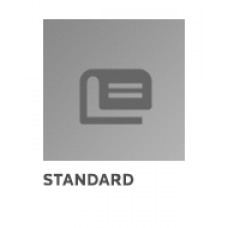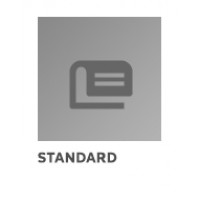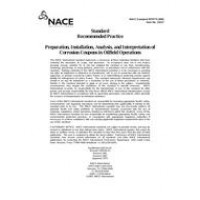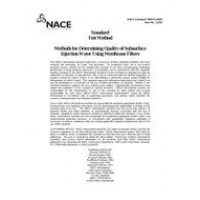NACE SP0472-2008
- Methods and Controls to Prevent In-Service Environmental Cracking of Carbon Steel Weldments in Corrosive Petroleum Refining Envi
- standard by National Association of Corrosion Engineers, 11/07/2
- Category: NACE
$177.00
$89.00
1.2 This standard covers only carbon steels classified asP-No. 1, Group 1 or 2. These classifications can be foundin the ASME Boiler and Pressure Vessel Code, Section IX9for pressure vessels, ASME/ANSI B31.3 for process piping,or API Standards 620 and 650 for tanks. It excludes steelswith greater than 480 MPa (70,000 psi) minimum specifiedtensile strength. Other materials may be vulnerable tocracking, but these materials are outside the scope of thisstandard.
1.3 The types of equipment covered by this standardinclude pressure vessels, heat exchangers, storage tanks,piping, valve bodies, and pump and compressor cases. Allpressure-containing weldments or internal attachmentweldments to the pressure boundary are included. Inaddition, weldments in some non-pressure-containingequipment, such as storage tanks, are included. Externalattachment weldments are sometimes included asdiscussed in Paragraph 3.5.1.
1.4 Both new fabrication and repair welds are within thescope of this standard. The practices included herein areintended to prevent in-service cracking and are not intendedto address cracking that can occur during fabrication, suchas delayed hydrogen cracking. In most cases, however,these practices are also helpful in minimizing thesefabrication problems. Useful information for preventingdelayed hydrogen cracking is provided by F.R. Coe, et. al.10
1.5 Welding processes covered by this standard includeshielded metal arc welding (SMAW); gas metal arc welding(GMAW); flux-cored arc welding (FCAW); gas tungsten arcwelding (GTAW); and submerged arc welding (SAW).Almost all types of weld configurations are included. Forspecific exceptions, such as hot taps, hardness limits andpostweld heat treatment (PWHT) requirements should bereviewed on a case-by-case basis.
1.6 Corrosive refinery process environments covered bythis standard can be divided into two general categories:services that could cause cracking as a result of hydrogencharging, and services that could cause ASCC. However,identification of the specific environments to which theguidelines set forth in this standard are to be applied toprevent various forms of in-service environmental crackingis the responsibility of the user. Figure 1 is a simplifiedschematic showing the interrelationships of the variouscracking mechanisms discussed in this standard.
 PDF
PDF
All of our standards document are available in PDF (Portable Document Format), an electronic, downloadable format.You will be able to download the file in your account downloads.
 Multi-User Access
Multi-User Access
After purchasing, you have the ability to assign each license to a specific user.
 Printable
Printable
At any time, you are permitted to make printed copies for your and your members' reference use.




